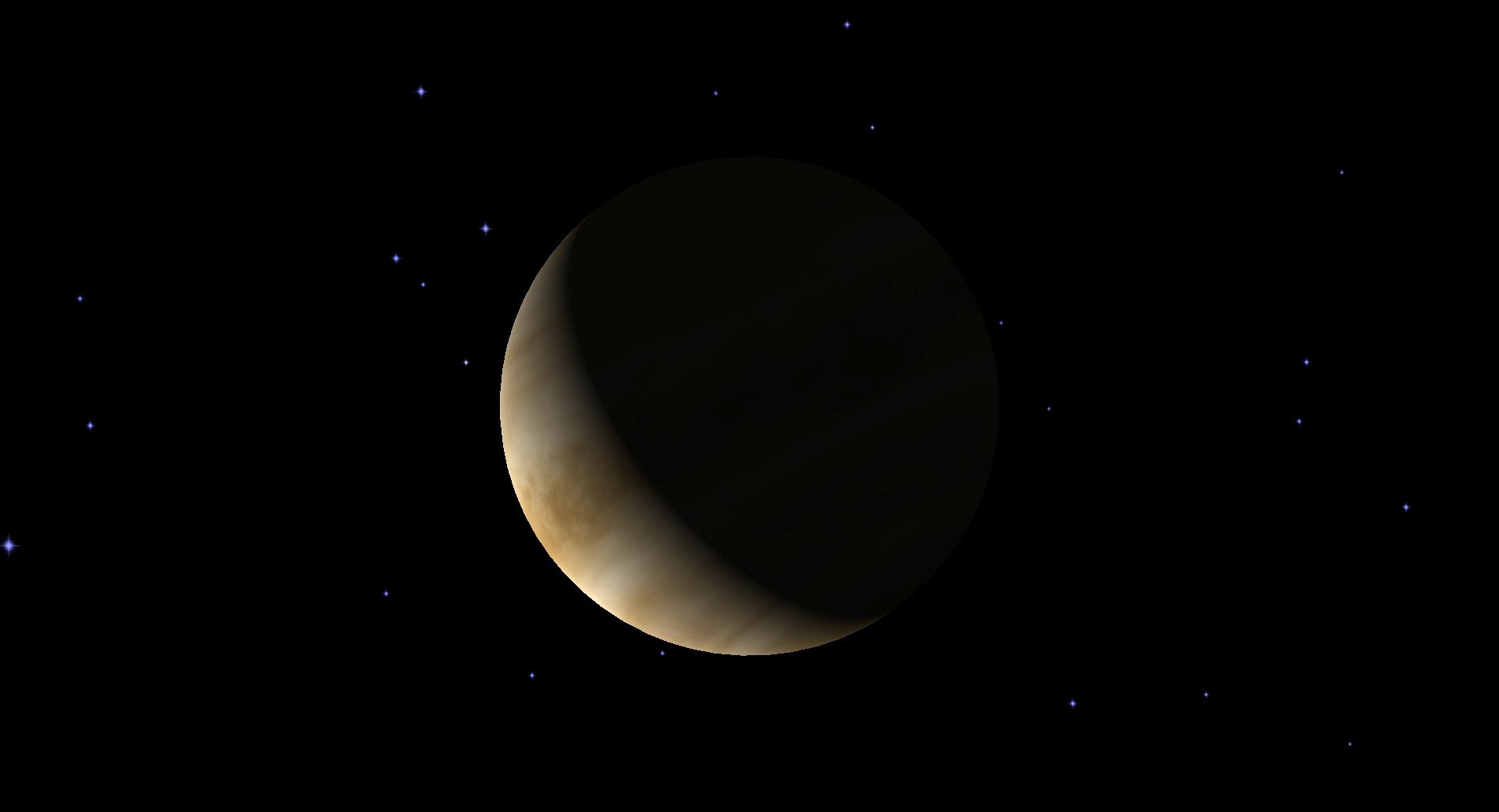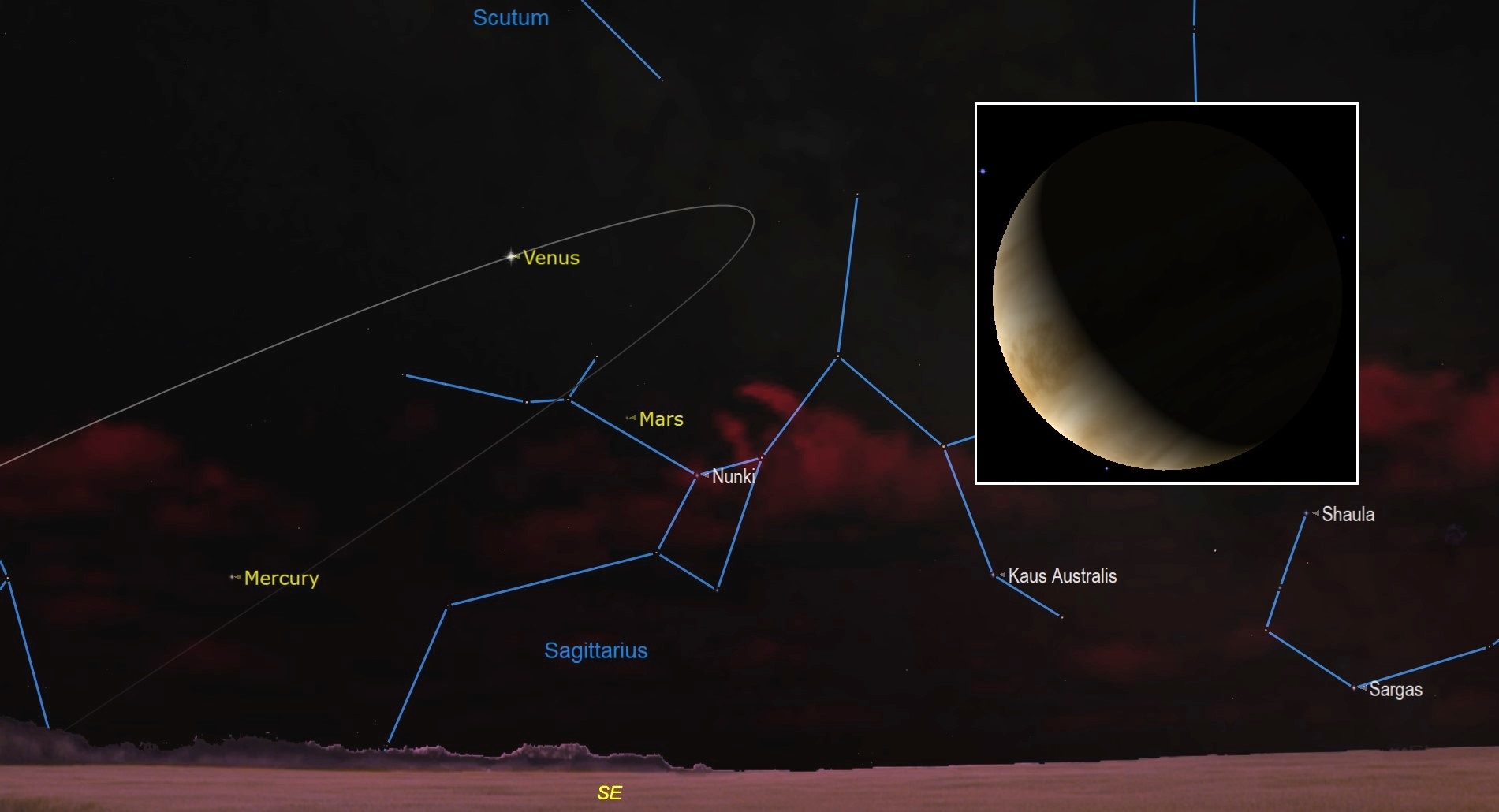
The planet Venus has returned to the early morning sky and has established itself as a dazzling morning lantern, emerging into view from beyond the east-southeast horizon before 5 a.m. local standard time.
Just one month, on Jan. 8, was the day of its inferior conjunction — when it passed between the sun and Earth and made its transition from an evening to a morning object. A week later it had moved far enough away from the sun's vicinity so that it was rising more than an hour before sunrise.
And now Venus is much easier to sight, rising more than two hours before the sun.
Related: The brightest planets in February's night sky: How to see them (and when)
Interestingly, for about the past week or so, I've been getting inquiries from those who arise early in the morning, on their way to work and school, asking what is that "dazzling white star," which now precedes the rising sun? Perhaps, they were standing at a bus stop or a train platform when their attention was drawn to Venus. Often, they will follow up with the comment, "Just a week ago, it wasn't there!" I suspect I'll be getting an increasing number of such inquiries in the coming days ahead.
Venus is now coming up in total darkness, about an hour before the first glimmer of dawn, while also shining at its pinnacle of brilliancy (magnitude –4.9). To give you an idea of just how radiant Venus is right now, it appears to gleam a full 25 times brighter than Sirius, the brightest of all stars. In fact, it's so bright, that you might try sighting it on very clear days with the naked eye after sunrise. If you can keep track of where it is through sunup, you should still be able to see it as a tiny white "speck" against the blue daytime sky.
And in places where there is no light pollution, Venus can even cast a faint but distinct shadow.
Get the Space.com Newsletter
Breaking space news, the latest updates on rocket launches, skywatching events and more!

During March and April, Venus will appear to slowly lower a bit in altitude in the predawn sky, but then from late April through about the middle of August, it will appear to rise at approximately the same time as the beginning of morning twilight, roughly two hours before sunrise. So, it pretty much will remain a fixture in our morning sky from now, right on through at least the middle of the summer.
Celestial summit meetings
As an added bonus, at intervals of approximately once a month, a lovely waning crescent moon will pass near to Venus, making for a head-turning sight in the pre-sunrise eastern sky. An especially attractive configuration will occur on the morning of April 27, when the moon will not only rendezvous with Venus, but the planet Jupiter as well. The three brightest objects of the night sky will form a very striking triangle that will be pointing down toward the east-southeast horizon; well worth setting your alarm to see!
And on that very same morning, if you have high-power binoculars or a small telescope, train them on Venus, then scan roughly a half degree to its lower left and try to see if you can sight the most distant planet, Neptune. It won't be easy though. Besides having to contend with the twilit sky background, Neptune — appearing as a tiny bluish star — will be about 63,000 times dimmer than Venus.
You'll have much better success on the mornings of April 30 and May 1, when Venus and Jupiter appear within a half-degree of each other, appearing as dazzling "double planet." On April 30, this dynamic duo will appear low above the eastern horizon, dramatically ascending the sky side-by-side. On the following morning, Venus will have shifted to Jupiter's lower left.
Finally, the closest and most stunning of the moon-Venus pairings will come on the morning of June 26, when a 7% illuminated crescent moon will be positioned just a couple of degrees to Venus's upper left.
Telescopic views
Now is also a fine time to examine the crescent of Venus in a telescope or even a pair of binoculars. A steady mounting for the binoculars — even just bracing them against the side of a tree — can make all the difference in the world.
There are, in fact, some individuals with such acute vision who claim that they can actually see the crescent of Venus without any optical aid. If you'd like to test your own perception of vision on Venus, the best time to try it would be during bright twilight, say 15 to 30 minutes before sunrise. At that time, Venus will appear with far less glare against the background sky, giving your eyes a better opportunity to perceive its shape.
As Venus slowly recedes from Earth in the coming weeks, its apparent size will appear to gradually diminish and its disk will become increasingly more illuminated. Right now, its crescent appears relatively large and slender, about one-quarter illuminated — rather similar in appearance to a five-day-old crescent moon. By April Fool's Day (April 1), Venus will appear only half as large as it appears now and it will resemble a gibbous moon, slightly more than half illuminated. Thereafter, Venus will be a rather disappointing telescopic object, continuing to shrink down to just a small, albeit brilliant, widening gibbous disk.
Coming attractions
After mid-August, Venus's slide back toward the sun will become more rapid, and by mid or late September it will finally disappear into the sunrise fires. It will sweep to a point on the far side of the sun — superior conjunction — on Oct. 22, and transition into the evening sky. Still, it is going take at least another month or so before it will begin to become noticeable again, this time very low near the west-southwest horizon shortly after sunset. Venus will then be at the start of a glorious evening apparition that will take us right on through the first half of the year 2023.
Joe Rao serves as an instructor and guest lecturer at New York's Hayden Planetarium. He writes about astronomy for Natural History magazine, the Farmers' Almanac and other publications. Follow us on Twitter @Spacedotcom and on Facebook.
Join our Space Forums to keep talking space on the latest missions, night sky and more! And if you have a news tip, correction or comment, let us know at: community@space.com.

Joe Rao is Space.com's skywatching columnist, as well as a veteran meteorologist and eclipse chaser who also serves as an instructor and guest lecturer at New York's Hayden Planetarium. He writes about astronomy for Natural History magazine, Sky & Telescope and other publications. Joe is an 8-time Emmy-nominated meteorologist who served the Putnam Valley region of New York for over 21 years. You can find him on Twitter and YouTube tracking lunar and solar eclipses, meteor showers and more. To find out Joe's latest project, visit him on Twitter.









